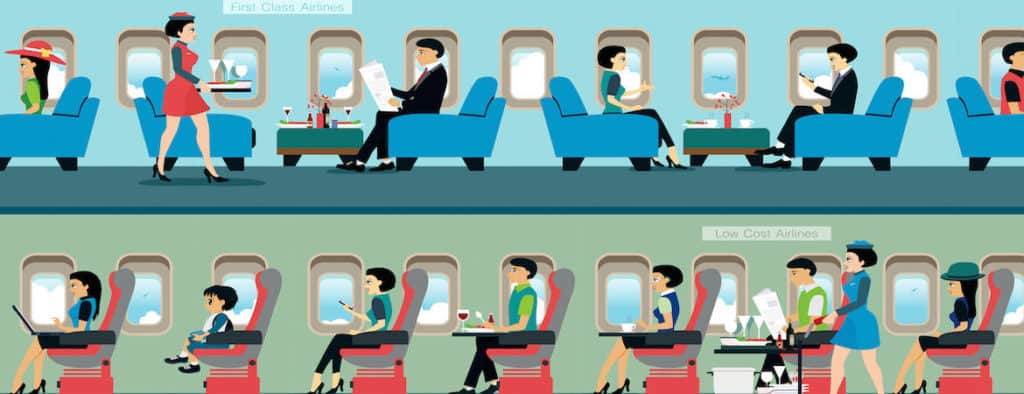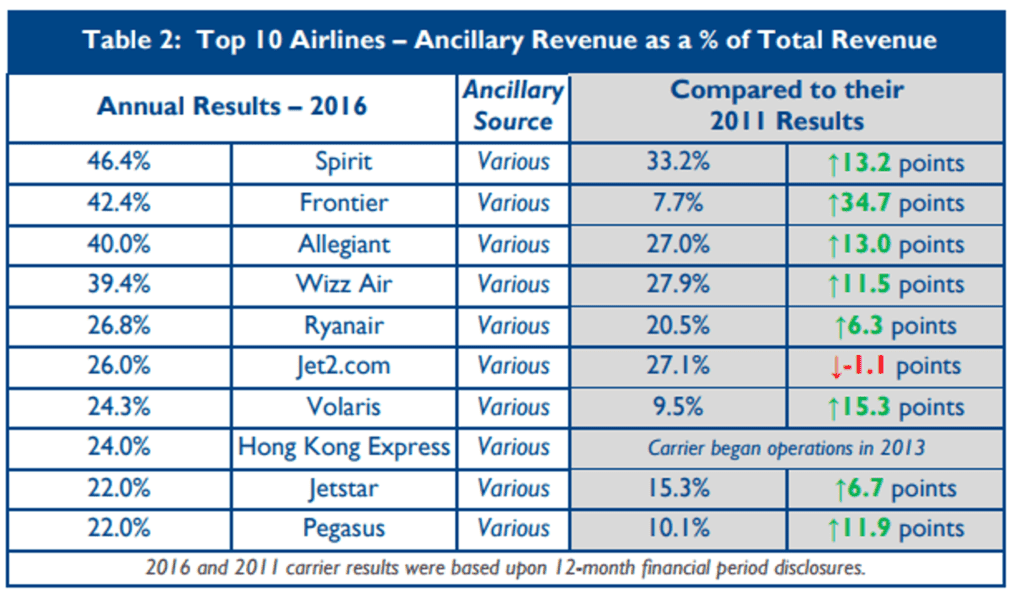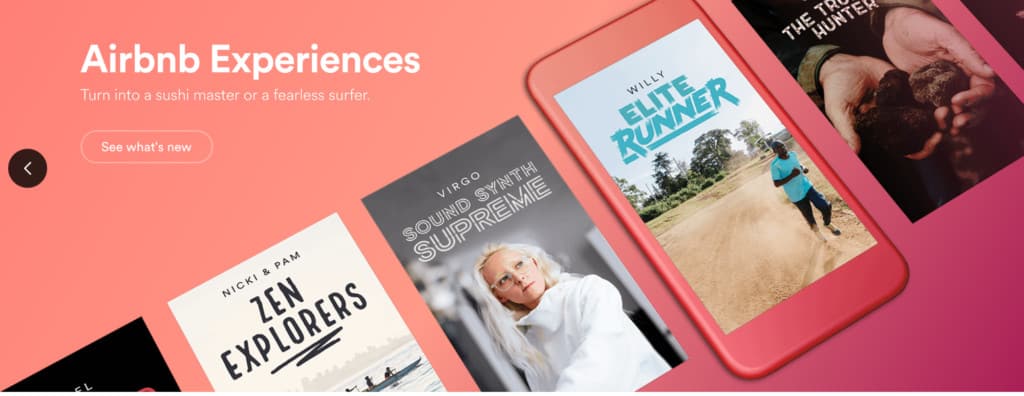Loyalty marketing and ancillaries were hot topics at the 4th annual Mega Event Asia Pacific in Singapore, which brought together aviation experts and professionals to deep-dive into these trends, strategies and disruptors. AI did a great job putting on an event with excellent speakers and content, and I was grateful to attend and network with other professionals on these topics. I wanted to share some thoughts coming out of the event as a mini-recap for those of you who may be interested.
TL;DR:
- Ancillary revenue and loyalty marketing are gaining increasing mindshare in the aviation industry as no longer being an afterthought to the ticket sale.
- Disruption in the aviation industry is due to: i.) the willingness of LCCs to meet pre-existing demand in the market for unbundled fares and ii.) a fundamental shift in the awareness and empowerment of consumers, whose purchasing behaviors are not always rational and can be tuned.
- Frictionless platforms and the efficient and strategic leveraging of user data will be the two most critical battlegrounds moving forward.
Why do Loyalty and Ancillaries matter?
At EveryMundo, we develop performance technology software products that help airlines grow flight search initiation and direct channel visibility (i.e. passenger bookings via website). Thus, the topics of loyalty and ancillaries have often felt somewhat removed from the main thrust of our efforts due to their being most relevant AFTER flight search initiation (i.e. ancillaries typically FOLLOW ticket selection), or in other environments altogether where the purchase of the flight ticket may not be the main show (i.e. co-branded credit cards). But thanks to the event, I’m now struck by the possibility that the mission of these two topics is at the core of consumer trends and expectations which have been disrupting the aviation industry (and others) for some time now.

In the last session of the event, Mitsumatsu-san from Japan Airlines, in responding to an observation made by Trevor Spinks from Scoot, stated that Low-Cost-Carriers (LCCs) have forever changed the aviation landscape by redefining what an airline’s product can be. Traditionally, an airline “product” was very likely a seat, a meal and perhaps lounge access. Today’s airline product is increasingly seen as whatever the customer desires (and is willing to pay for) in terms of her travel experience. The successes of LCCs can be viewed through the lens of increased consumer awareness and consideration for what she is willing to pay according to the desired experience, of which only one part may be the actual seat purchase.
Disruption Driven by Shifting Consumer Preference
This disruption has already lead to ripple effects for the industry as a whole, which continue to this day:
- Consumer re-evaluation of which airlines they are loyal to and why (“good price for the experience” to recalculated once you realize the modularization of the experience can change the price)
- Increased turf-wars among airlines necessitated by the above reevaluation (i.e. increasingly discerning passengers).
- Growing awareness that the ability to transact an unbundled product is just as critical as the willingness of the business to decide to unbundle. Put another way, if a carrier cannot provide an effective transactional environment where passengers can purchase incrementally, they will necessarily be missing out on a significant piece of the puzzle, even if they are committed to unbundling.
As Mitsumatsu-san stated, LCCs indeed deserve credit for proving the existence of a significant portion of the market willing to buy a dramatically differentiated product, leading to re-evaluation of preference and loyalty occurring among consumers at large. But we must step back and see the forest from the trees, realizing that the consumer is still at the heart of this pattern shift and LCCs are simply filling the demand.
The reasoning behind these consumer shifts is fascinating to consider and has implications, not only for the aviation industry, but more broadly for business and exchange systems as a whole.
The tip of the Iceberg – Humans are not always rational
So does this mean that we are effectively in a race to the bottom in the aviation industry, and that the lowest price always wins? I don’t believe this to be the case, and human nature and behavioral economics point to why the story is NOT so simple. During a Thursday morning session, Amadeus’ Mike Robinson shared insights on how consumers can respond in seemingly illogical ways when it comes to purchasing decisions. I’m reminded of similar insights made by Robert Cialdini, in his 2003 classic study on persuasion, “Influence: The Psychology of Persuasion”, where he provides fascinating examples of why people say “yes”. I’ll summarize here some of the key ideas applicable to this conversation and then circle back to why it doesn’t have to be a race to the bottom:
- While we may initiate purchases rationally, we are strongly susceptible to being influenced by myriad other factors, which can result in non-rational outcomes.
- We appreciate having options, but too many options results in confusion and distraction.
- Presentation and packaging can significantly impact decision-making, leading to surprising outcomes.
Robinson shared some interesting data on a recently completed study showing that when an LCC increased the price on the first row of seats while leaving all other fares unchanged, customers’ willingness to purchase higher priced fares (toward the front of the plane, exit seats etc.) also increased. This behavior can be attributed to what Cialdini referred to as the “contrast principle“. Simply put, when the we are comparing and contrasting price points, the higher the “anchor” price (highest price), the more willing we are to consider items below the anchor price even when their intrinsic value remains constant. Robinson’s sharing demonstrates this perfectly: the increase in price of the first row of seats (the “anchor”) led to higher sell-through on the other fares which were NOT changed. And voila – humans can be tuned in their ticket buying behavior.
This behavior supports the grand vision of many airlines retailing strategy (and no doubt one that LCCs are already furiously attempting, some successfully): the possibility that while certain customers may initiate with an unbundled fare, given the right sales queues and process, they could end up purchasing additional ancillary revenues for an amount that matches or even exceeds other bundled fares which they initially rejected as being too high. And perhaps even more importantly, they could potentially walk away from the transaction happier and more loyal to the brand.

The tip of the Iceberg – Customers Empowered Through Platforms
We already have seen disruption in other industries fueled by market gap in which sits consumers’ willing to try a differentiated product offerings, often marketed at a lower price but not necessarily always. This gap is filled by players with the right technology and business model that match (and even drive) consumer preference. Think Uber in the transport industry, Netflix and Spotify in the film/tv/music industries, and of course Airbnb in the hotel and accommodations industry. The take-away would seem to be that if you give the consumer new options which further lower the product floor (defined only as price point, not necessarily value or quality), you are likely to discover previously untapped demand.
However I believe this is correlated to a larger trend of platforms empowering customers, not only by offering differentiated products but also in eliminating friction from the transaction. Spotify’s matching algorithm analyses user listening behaviors in order to more effectively perform the heavy lifting of in-app music recommendation. Airbnb’s booking process is smooth, clean, efficient, and optimized to minimize stress for both the guest and the host. Uber studies passengers’ ride history to decrease required keystrokes for repeat route bookings, not to mention allows passengers to book through the phone instead of having to stand on a curb!
And what are the rewards for creating such platforms which enable consumers? Loyalty is certainly one reward as the explosive growth of these platforms have demonstrated, which leads to the second reward: permission (albeit temporarily and with conditions) to offer additional products to customers by virtue of the trust engendered by the earned loyalty. The above players are only now just starting to scratch the surface of the potential for these other rewards. Airbnb has begun testing selling experiences through the platform in certain markets to accompany their accommodation (i.e. book a 3-hour SF bike tour for $100 to complement your stay). Spotify has made concert details available through the app, representing another massive potential channel for disruption in the ticketing space. Uber is perhaps the best example with having been able to launch Uber Eats and also Uber Black in several key markets.

The last reward from creating such effective platforms may be the most critical in the long-run: the accumulation of precious user data. The above players no doubt invested heavily (and continue to do so) to collect and analyze user data to continuously drive the development of the platform, creating to product demand and product prediction in advanced instances.
Implications for Airlines & EveryMundo
Where does all of this leave the aviation industry and how should carriers move forward on ancillaries and loyalty? I hypothesize as follows:
- Assuming the market can act freely, providers that offer differentiated products will find a base of receptive customers. Traditional carriers who decide they do not wish to price-match on airfare alone are destined to lose these passengers to competition in the long run.
- There is profit to be made beyond the ticket sale, and behavioral economics provides insights into where profit is most likely to be found and why. Increasing anchor prices, bundle testing are only some of the immediate possibilities.
- In other industries, platforms have been shown to be the ultimate differentiator that enable loyalty and incremental revenue streams. Airlines should take this to heart, of course with their respective apps, but also more symbolically in terms of which distribution and sales channels are most optimal in enabling loyalty and incremental revenue streams.
- The acquisition and utilization of user data may be the keys to the castle in platform optimization and in acquiring and sustaining loyal customers.
At EveryMundo, we have seen that fares have a powerful ability to entice users to act. Simply displaying the lowest fares for specific routes or destinations directly on an airline’s page has been shown to increase flight search initiation dramatically, even when the actual flight searched resulted in different fares due to modified search criteria. We have also observed first hand how data (fares) helps our customers capture additional opportunities from users who otherwise would have left the website simply from not wanting to spend time searching (or would have not made it there at all). Lastly, we helping increase our customers’ ability to enhance their platform through products leverage critical data (fares) and eliminating friction in the flight search process.
But we have also been researching and planning, for some time now, how best to help our customers beyond ticket purchase, such as how we can help with ancillary revenue and supporting loyalty. We already are experimenting with exchanging with our customers’ ancillary feeds and researching avenues for us to also tap into loyalty data. And now, after attending The Mega Event in Singapore, the tremendous possibility and strategic importance for us to begin to offer products that can help customers in these two areas has never been clearer.
More on that for a future post!
